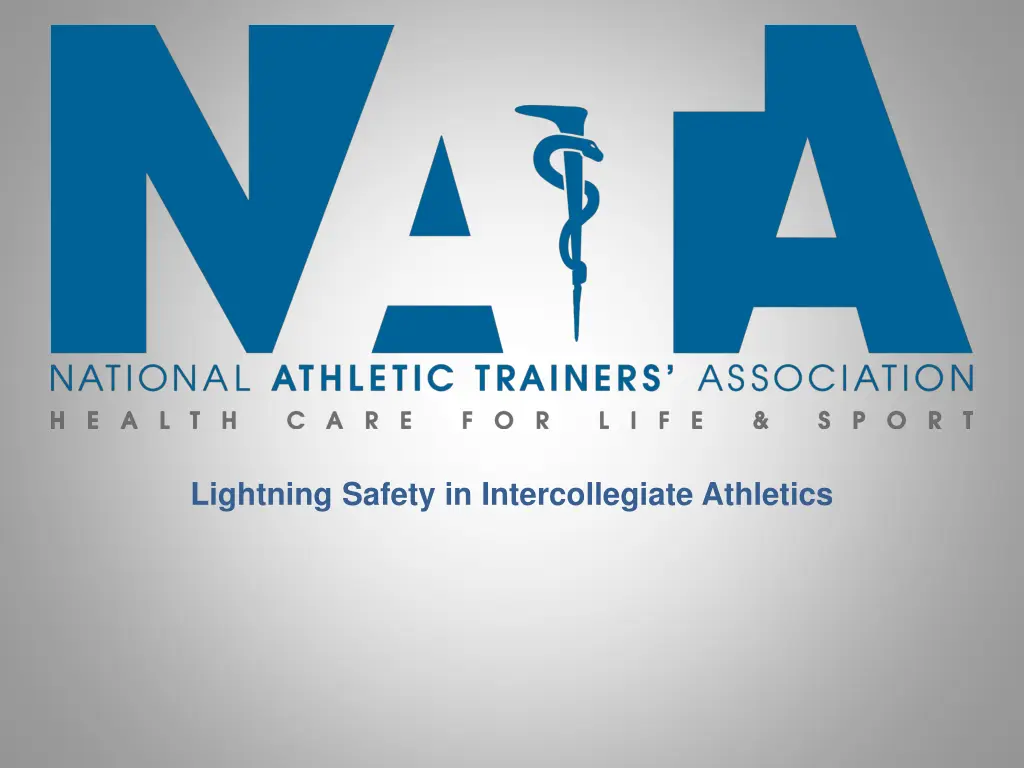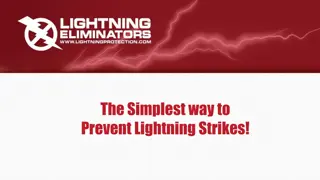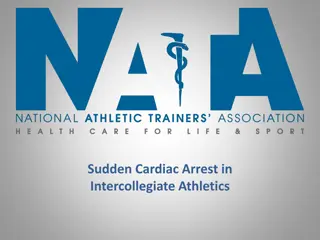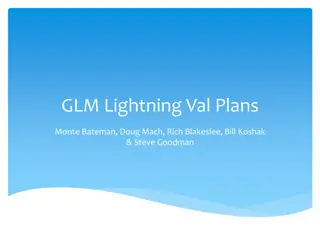Lightning Safety in Intercollegiate Athletics
Ensure safety during outdoor activities by having an emergency action plan, designated weather watcher, and awareness of lightning risks. Use technology and the "Flash-to-Bang" method to monitor and respond to lightning strikes effectively.
Download Presentation

Please find below an Image/Link to download the presentation.
The content on the website is provided AS IS for your information and personal use only. It may not be sold, licensed, or shared on other websites without obtaining consent from the author.If you encounter any issues during the download, it is possible that the publisher has removed the file from their server.
You are allowed to download the files provided on this website for personal or commercial use, subject to the condition that they are used lawfully. All files are the property of their respective owners.
The content on the website is provided AS IS for your information and personal use only. It may not be sold, licensed, or shared on other websites without obtaining consent from the author.
E N D
Presentation Transcript
Lightning Safety Formalize a EAP specific to lightning safety Identify a designated weather watcher and/or check weather updates Establish a chain of command (Insert names/positions of institutional personnel who has the authority/responsibility to suspend game, practice, etc.) Develop Criteria for Postponement and Resumption of Activities Be conservative and stick to procedures, even if it s not raining Consider Large Venue Planning Plans will change based on large outdoor venue Spectator announcements and clearance
Lightning Safety Lightning and General Weather Awareness If thunder can be heard, lightning is a hazard In the event of impending thunderstorms, those in control of events should fulfill their obligation to warn participants and guests of lightning danger All individuals have the right to vacate an outdoor or unsafe area without fear of repercussion or penalty if they feel in danger
Lightning Safety Use technology to help you monitor lightning strikes Apps like WeatherBug, Lightning Pro, RadarScope, etc., can give you an idea of where lightning can be coming from Consider using a source connected to NWS, NLDN, USPLN or other reliable source for more accurate lightning strike data (objectively and independently verified) Know that radar can be fooled by things that look like lightning, and give you a false reading, but better safe than sorry
Lightning Safety Use the Flash to bang 30 30 rule of deciding when to suspend activities if technology is unavailable Because lightning can strike up to 10 miles from a storm, you should seek safe shelter as soon as you hear thunder or see lightning. Suspend activity and move to a safe location if the time between the lightning flash and the rumble of thunder is 30 seconds or less. Wait until the last bang hasn t been heard for at least 30 minutes. To estimate the distance between your location and a lightning flash, use the "Flash to Bang" method: If you observe lightning, count the number of seconds until you hear thunder. Divide the number of seconds by five to obtain the distance in miles. Example: If you see lightning and it takes 10 seconds before you hear the thunder, then the lightning is 2 miles away. If Thunder is heard 5 seconds after a Flash 10 seconds after a Flash 15 seconds after a Flash 20 seconds after a Flash 25 seconds after a Flash 30 seconds after a Flash 35 seconds after a Flash 40 seconds after a Flash The Lightning is... 1 mile away 2 miles away 3 miles away 4 miles away 5 miles away 6 miles away 7 miles away 8 miles away
Lightning Safety Seek Shelter in a SAFE location Understand the qualifications of safe structures, and know where they are in relation to each athletic field Fully enclosed building with plumbing and electric wiring Fully enclosed vehicle with metal roof and windows up (don t touch any metal while in car) Be able to identify unsafe locations around each field or area In golf carts, under trees, indoor swimming pools, showering in a substantial building, under picnic areas, in storage sheds, and open fields Insert recommended institutional shelters in case of inclement weather
Lightning Safety In the event safe structures cannot be found or identified consider the following: Avoid elevated places, open areas, tall isolated objects, being in or around large bodies of water (including swimming pools) or being near metal objects. Avoid sheltering under trees for safety or to stay dry Assume lightning position for increased safety (feet together, crouched down, hands over ears)
Lightning Safety Resuming Activity Wait a minimum of 30 minutes after the last strike within 10 miles Person in charge should visit with officials and staff to make sure playing surface is safe from weather changes Give participants ample time to warm-up prior to resuming activity
Lightning Safety First Aid for lightning strike victims Lightning strike victims need immediate first aid They do not carry a charge and should be helped like any other victim Make sure the scene is safe before helping, first move the victim to a safe location Safe to perform CPR and have an AED on hand to assist with any resuscitation efforts
References National Athletic Trainers Association Position Statement: Lightning Safety for Athletics and Recreation (2013) http://natajournals.org/doi/pdf/10.4085/1062- 6050-48.2.25

























